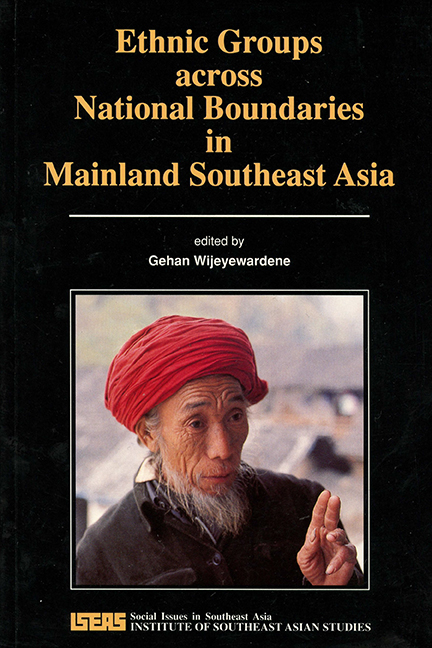Book contents
- Frontmatter
- Contents
- Foreword
- Contributors
- Acknowledgements
- 1 Introduction: Definition, Innovation, and History
- 2 Language and Ethnicity: The Mon in Burma and Thailand
- 3 Thailand and the Tai: Versions of Ethnic Identity
- 4 A Comparative Study of Structure and Contradiction in the Austro-Asiatic System of the Thai-Yunnan Periphery
- 5 Ethnicity, Nationalism, and the Nation-State: The Karen in Burma and Thailand
- 6 Capitalism and the Structure of Yao Descent Units in China and Thailand: A Comparison of Youling (1938) and Pulangka (1968)
- 7 Squatters or Refugees: Development and the Hmong
- 8 Afterword: “Ethnicity” and Anthropology
- Index
- THE EDITOR
5 - Ethnicity, Nationalism, and the Nation-State: The Karen in Burma and Thailand
Published online by Cambridge University Press: 21 October 2015
- Frontmatter
- Contents
- Foreword
- Contributors
- Acknowledgements
- 1 Introduction: Definition, Innovation, and History
- 2 Language and Ethnicity: The Mon in Burma and Thailand
- 3 Thailand and the Tai: Versions of Ethnic Identity
- 4 A Comparative Study of Structure and Contradiction in the Austro-Asiatic System of the Thai-Yunnan Periphery
- 5 Ethnicity, Nationalism, and the Nation-State: The Karen in Burma and Thailand
- 6 Capitalism and the Structure of Yao Descent Units in China and Thailand: A Comparison of Youling (1938) and Pulangka (1968)
- 7 Squatters or Refugees: Development and the Hmong
- 8 Afterword: “Ethnicity” and Anthropology
- Index
- THE EDITOR
Summary
The Karen number approximately 2.2 million in Burma and some 242,000 in Thailand. Although there are many Karen who continue to live within the Socialist Republic of the Union of Burma (now known as the Union of Myanmar), there is an active, intransigent Karen separatist movement with a predominantly Christian leadership. The separatist movement, which came into existence soon after the end of World War II, operates from bases along the Thai-Burmese border. In Thailand, no such movement has emerged. In the past, movements with political features have been essentially politico-religious millenarian movements and, historically, such movements among the Karen have been found on both sides of the Thai-Burmese border.
One of the more intriguing features of Karen nationalism and the Karen separatist movement in Burma, despite its conspicuous presence in border areas, is that few Karen in Thailand identify with the nationalism at the heart of the movement or actively support it. Much has been said of the “porosity” of borders in Southeast Asia in terms of the historical and, indeed, contemporary movement of populations, and of cultural and linguistic continuities among peoples living across national boundaries. In many respects, this is well illustrated in the Karen case. Yet among the Karen themselves on either side of the Thai-Burmese border (and within these two nation-states) it is the differences that seem to be more readily apparent, and Karen nationalism in turn seems to be limited to specific groups or communities within Burma. While language or dialect differences, education, and religion — which have to do with historical reasons as much as the “imperatives of the state” in Burma and Thailand — serve to explain in part this perception of discontinuities, it appears to be the case that the notion of a “border” between existing states is intrinsic to the application of ideas about a common culture, language, and social and political organization, and their associated discontinuities.
- Type
- Chapter
- Information
- Ethnic Groups Across National Boundaries in Mainland SEA , pp. 102 - 133Publisher: ISEAS–Yusof Ishak InstitutePrint publication year: 1990



